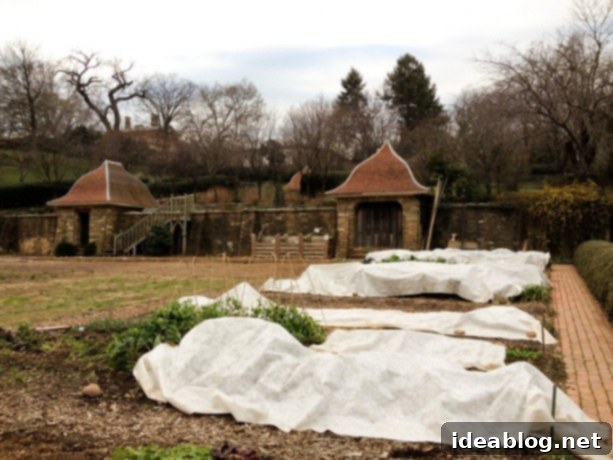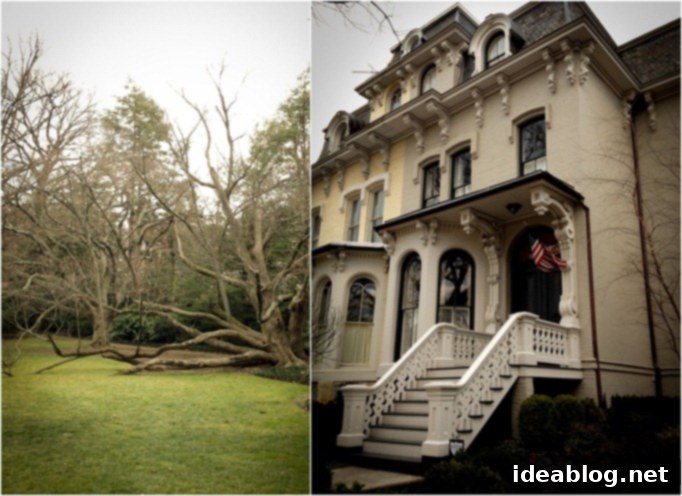Discovering Dumbarton Oaks: Georgetown’s Historic Gardens and Artistic Sanctuary in Washington D.C.
Living in the same city for over two decades can sometimes lead to a curious phenomenon: believing you’ve seen it all. Washington D.C. is a city rich with history, monuments, and cultural institutions, yet it still holds secrets even for its long-time residents. It was just such a moment of delightful surprise when my companion, Connor, and I serendipitously stumbled upon Dumbarton Oaks, an exquisite hidden gem nestled right in the vibrant heart of Georgetown. This discovery was a profound reminder that no matter how familiar a place may seem, there are always new layers to uncover, offering fresh perspectives and enriching experiences that make you fall in love with your surroundings all over again.
There’s a unique joy in discovering something entirely new within a landscape you thought you knew intimately. It’s akin to finding a secret garden in your own backyard – a revelation that sparks curiosity and opens your eyes to countless other wonders you might have overlooked for years. Dumbarton Oaks, with its serene beauty and profound historical significance, offered precisely this kind of experience. It was a day that began like any other, only to unfold into an unexpected journey through meticulously manicured gardens, stunning architectural details, and a rich tapestry of art and history, proving that the greatest adventures often lie just around the corner, waiting to be found.
The history of Dumbarton Oaks is as captivating as its physical beauty. Originally built in 1801, this sprawling estate encompasses more than ten acres of prime real estate, strategically positioned within the charming, historic residential area of Georgetown. Its true transformation, however, began in 1920 when it was acquired by Mildred and Robert Woods Bliss. The Blisses were not merely wealthy art and antique collectors; they were visionary patrons with an unwavering dedication to beauty and scholarship. Together, they meticulously transformed the property into the awe-inspiring estate visitors see today, pouring their passion into developing its renowned gardens, assembling world-class art collections, and establishing a prestigious research library.
Their dream was to create a sanctuary where art, nature, and intellectual pursuits could flourish. After decades of devoted work, the Blisses gifted Dumbarton Oaks to Harvard University in 1940, ensuring its legacy would endure. Today, it serves as a world-renowned research institute focusing on Byzantine, Pre-Columbian, and Garden and Landscape studies, while also operating as a public museum and garden. This unique arrangement allows visitors to step back in time, explore diverse botanical landscapes, admire priceless art exhibits, and gain a fascinating glimpse into a very different kind of past – one shaped by the refined tastes and philanthropic spirit of its former owners.

One of the most enchanting aspects of visiting Dumbarton Oaks is the feeling of continuous discovery. Just when Connor and I believed we had explored every corner of the property, another hidden garden, a secluded terrace, or a breathtaking vista would reveal itself, inviting us further into its embrace. The landscape design, largely conceptualized by Mildred Bliss in collaboration with the renowned landscape architect Beatrix Farrand, is a masterpiece of garden artistry. It features a series of terraced gardens, each with its own distinct character, flowing seamlessly from formal parterres to wilder, more naturalistic areas. From the intricate beauty of the Rose Garden to the tranquil serenity of the Pebble Garden and the dramatic ascent of the Forsythia Dell, every section offers a unique sensory experience.
This meticulously sculpted property stands as an incredibly beautiful landscaped haven, providing a welcome retreat from the often traffic-jammed and hectic pace of Washington D.C. Stepping through its gates feels like entering a different world, where the sounds of the city fade away, replaced by birdsong and the gentle rustle of leaves. It’s a place where one can truly unwind, allowing the beauty of nature and art to wash over them. The combination of classic European garden aesthetics with a distinctly American sensibility makes Dumbarton Oaks a pivotal example of 20th-century landscape design and an essential visit for anyone interested in horticultural excellence and peaceful contemplation.
Beyond the magnificent gardens, Dumbarton Oaks is also home to world-renowned collections of Byzantine and Pre-Columbian art. The museum’s galleries offer a journey through millennia of human creativity, showcasing intricate mosaics, ancient textiles, exquisite jewelry, and monumental sculptures. These collections, carefully assembled by the Blisses, reflect their global interests and their dedication to preserving cultural heritage. Walking through these galleries, one gains a deeper appreciation for the rich history of human civilization and the enduring power of artistic expression. The house itself, once the Blisses’ private residence, offers a glimpse into their cultivated lifestyle, with beautifully preserved rooms filled with period furniture, decorative arts, and a vast personal library.
This confluence of natural beauty, historical architecture, and significant art collections makes Dumbarton Oaks a multifaceted cultural destination. It’s a place where scholarly pursuit meets public enjoyment, where the legacy of visionary collectors continues to inspire. Whether you’re a history buff, an art enthusiast, a garden lover, or simply seeking a tranquil escape, Dumbarton Oaks provides an unparalleled experience, enriching the understanding of both the past and the present. It truly embodies the concept of a “hidden gem” – a treasure trove of beauty and knowledge waiting to be explored by those willing to wander off the beaten path.
After our unexpected and thoroughly delightful visit to Dumbarton Oaks, Connor and I spent the rest of the afternoon meandering through the enchanting streets of residential Georgetown. This neighborhood, adjacent to the historic estate, was a new-to-me area for strolling, and it proved to be just as enjoyable in its own unique way. It allowed me to indulge in one of my absolute favorite pastimes: admiring and appreciating beautiful, historic row houses. Georgetown is famous for its impeccably preserved 18th and 19th-century architecture, with each brick facade and intricate doorway telling a story of bygone eras. The tree-lined streets, cobblestone alleys, and charming storefronts create an atmosphere that is both elegant and inviting, a perfect complement to the tranquil grandeur of Dumbarton Oaks.
I was undoubtedly guilty of straining my neck to peer into several windows, and more times than I could count, I enthusiastically shouted to Connor, “Look at that kitchen!” Each glimpse into a tastefully decorated interior sparked a fresh wave of inspiration and appreciation for the timeless beauty of these homes. And, of course, my ultimate favorite exclamation, “Oohh…they have one of those glass-fronted fridges!” This particular detail, a blend of vintage charm and modern sophistication, always captures my imagination. It’s these small, personalized observations that make exploring a city so engaging, connecting you to the lives lived within its walls. The afternoon was a perfect blend of historic exploration and delightful urban discovery, affirming the endless charm that Washington D.C., particularly its Georgetown district, has to offer.
Some things truly never change; the joy of discovery, the appreciation for beauty, and the simple pleasure of an unexpected adventure remain constant sources of happiness. This unplanned visit to Dumbarton Oaks, followed by our delightful wander through Georgetown, epitomized the best of what travel, even local travel, can offer. It underscored the importance of remaining open to new experiences and allowing spontaneity to guide your path.
Here’s to many more such adventures and unexpected discoveries in the year ahead, continuing to explore the hidden corners and celebrated landmarks that make our world so wonderfully rich and captivating. These moments are what truly make life beautiful.
(All post photos were taken on my iPhone, capturing the raw beauty of our spontaneous discovery.)
